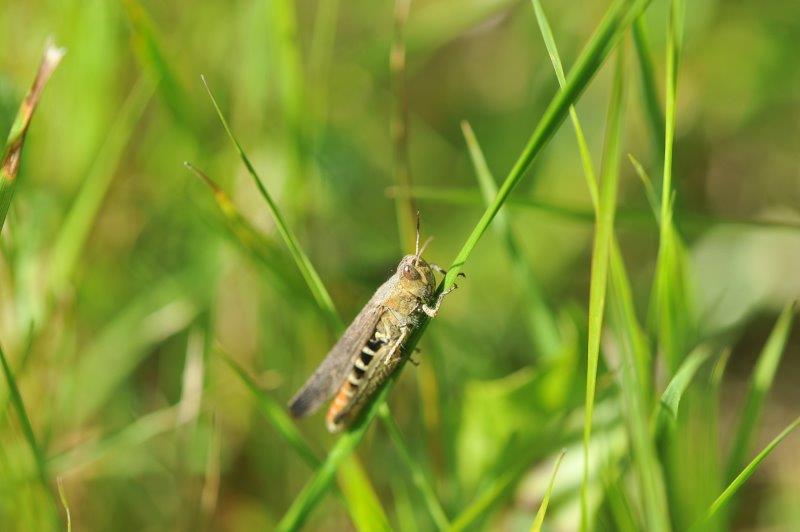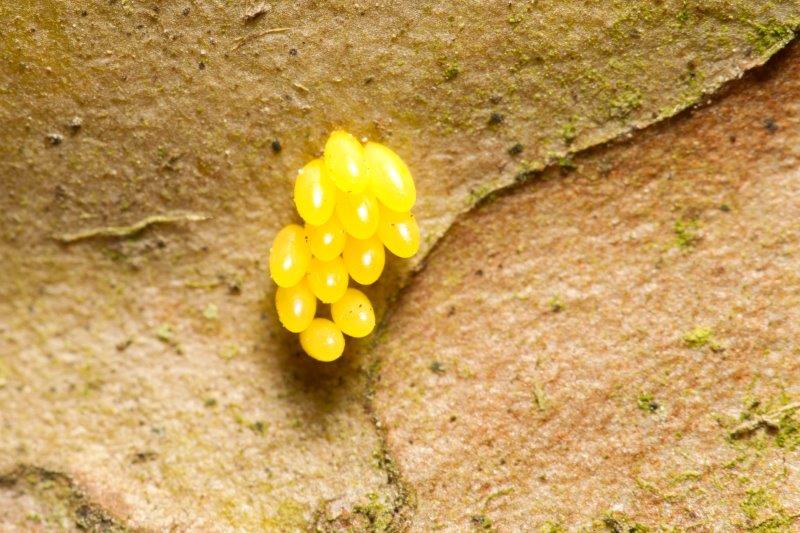There are at least 11,000 known species of grasshopper found all over the world, about 1,000 of which are native to North America, and each with their own diet, appearance, and tolerances.
While the most popular genus of grasshopper is Melanoplus, be aware that the specific grasshopper you may be trying to identify could be much trickier than other insects because of the sheer volume of grasshopper species and their transient migration habits.
Grasshoppers are known to live independent and solitary lives but, when grasshoppers begin to socialize and form gregarious swarms, they are then referred to as locusts despite there being no scientific difference between the two. Although hundreds of different grasshoppers are found in the United States varying from region to region, they all generally share the same diet, relative appearance, and predatory weaknesses.
How to Get Rid of Grasshoppers
- Grasshopper Distribution: 11,000 species naturalized all over in temperate regions and grasslands
- Grasshopper Host Plants: Any broadleaf crop including grasses, grains, legumes, and brassicas
- Grasshopper Damage: Chewed and gnawed leaves, yet will also feed on stems, pods, and fruit
- Grasshopper Life Cycle: 1 year
- Grasshopper Eggs Per Lifetime: ~100
- Grasshopper Control: Carbaryl bait, Nosema locustae bait, neem oil, capcasin spray
- Grasshopper Predators: Birds, chickens, rodents, bats
- Most Common Grasshopper in North America: Red-Legged Grasshopper (Melanoplus femurrubrum)

What Do Grasshoppers Look Like?
Grasshoppers are one of the largest and most easily recognizable garden pests throughout the world and whether you’re looking to identify a grasshopper, cricket, locust, or katydid, rest assured that all of these share nearly identical features, yet will all be various sizes.
Perhaps the most defining trait of all grasshoppers are their large, catapulting back legs and wide-set compound eyes that have evolved to obtain the broadest range of vision.
Because there are so many species of grasshopper all around the world, their color is not universal and will change and adapt regionally for the most optimal camouflage.
Grasshopper Damage
Grasshoppers are large insects that feed directly on leaves and foliage of just about anything in the garden.
Because they chew directly on leaves, stems, and fruit, it makes it easier to identify the garden culprit as opposed to some sap-sucking insects such as aphids, mites, and mealybugs.
There is no pattern to a grasshopper chew marks as they will indiscriminately chew through the leaf including veins and venules.
Grasshopper damage is easily mistaken for damage caused by earwigs because of their aggressive feeding on foliage.
However, with a scrutinous eye you can closely see that earwig chew marks develop a clean and almost circular pattern while grasshoppers have a more shapeless and haphazard quality.

What Do Grasshoppers Eat?
Grasshoppers are true herbivores and are notorious for feeding on vegetation of broadleaf grasses such as corn, wheat, alfalfa, barley, and tobacco. If you’re a home gardener you’ve likely already experienced heavy leaf damage to your favorite broadleaf vegetables such as kale, cabbage, collard greens, bean, field pea, and really anything with healthy broad leaves.
Though grasshoppers are most known for chewing on vegetative growth, they are not choosy and will feed on immature seed pods, fruits, and stems. There is no real difference between a grasshopper and locust, as grasshoppers will eat all the same crops as a swarm of locusts.
Grasshopper Eggs
Grasshoppers lay their eggs in the fall to overwinter in a protective pod containing up to 120 eggs. These egg-filled pods can be found buried in shallow soils such as in garden beds or boxes and, depending on species, most grasshopper eggs will hatch by mid-late spring.
One of the most effective means to minimize grasshoppers in the garden is to till your soil in both the fall and early spring to keep it free of potentially dormant grasshopper eggs.
The eggs found inside the pods come in a variety of colors, but the most common of grasshoppers lay yellow eggs that look very similar to roe, fish eggs.

How to Get Rid of Grasshoppers
The three most reliable ways to rid your garden of grasshoppers are to invite predators, till the garden for eggs, or spray neem oil or an organic capsaicin-based solution on your crops.
Chickens, ducks, and birds are some of the grasshopper’s fiercest predators but, if you don’t have the space for livestock, be sure to till the garden every season to rid it of dormant eggs. Keep an active bird feeder for season-long results.
But like most home gardeners, neem oil or a hot capsaicin-based spray are generally more than enough for organic pest control including grasshoppers.
You’ll soon find that most garden pests can be sprayed and treated with a diluted neem oil or dish soap solution.
Grasshopper Treatment

- Carbaryl Baits - Dry granule insecticide used for many small pests
- Nosema locustae Baits - Dry granule containing pathogens harmful to Cicadidae
- Dish Soap and Water - 2 tbsp to 1 quart water
- Organic Neem Oil Spray - 1 tsp neem oil and 1/4 tsp dish soap to 1 quart water
- Capsaicin Spray - Soak 6-7 crushed dry peppers in boiling water and spray when cool
- High Pressure Hose - Many insecticides are sold to be attached to the end of any common gardening hose for immediate control




